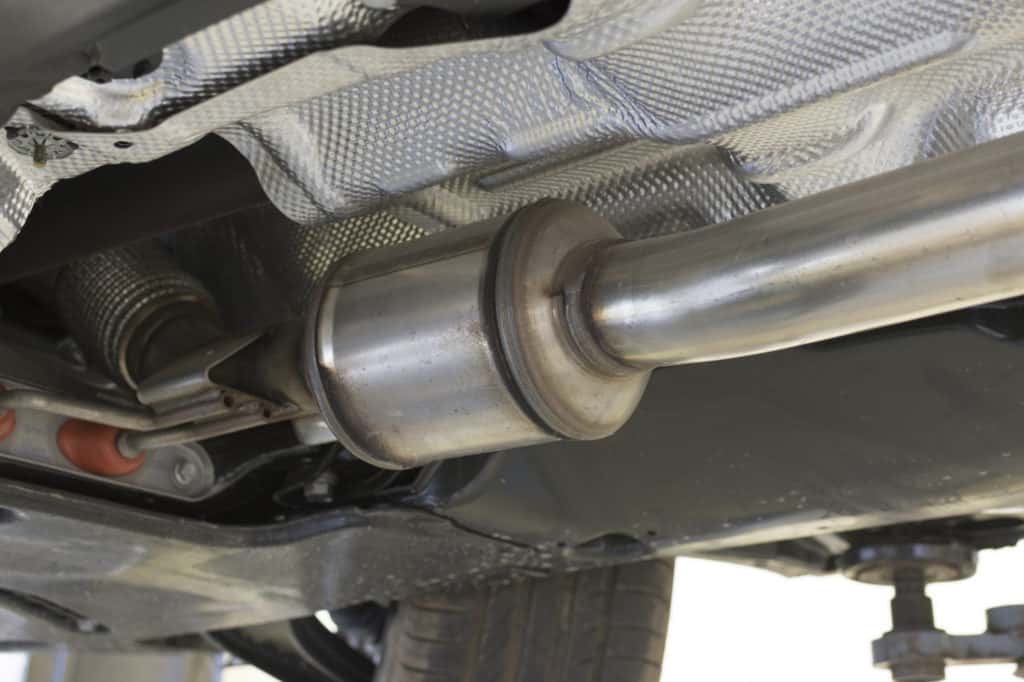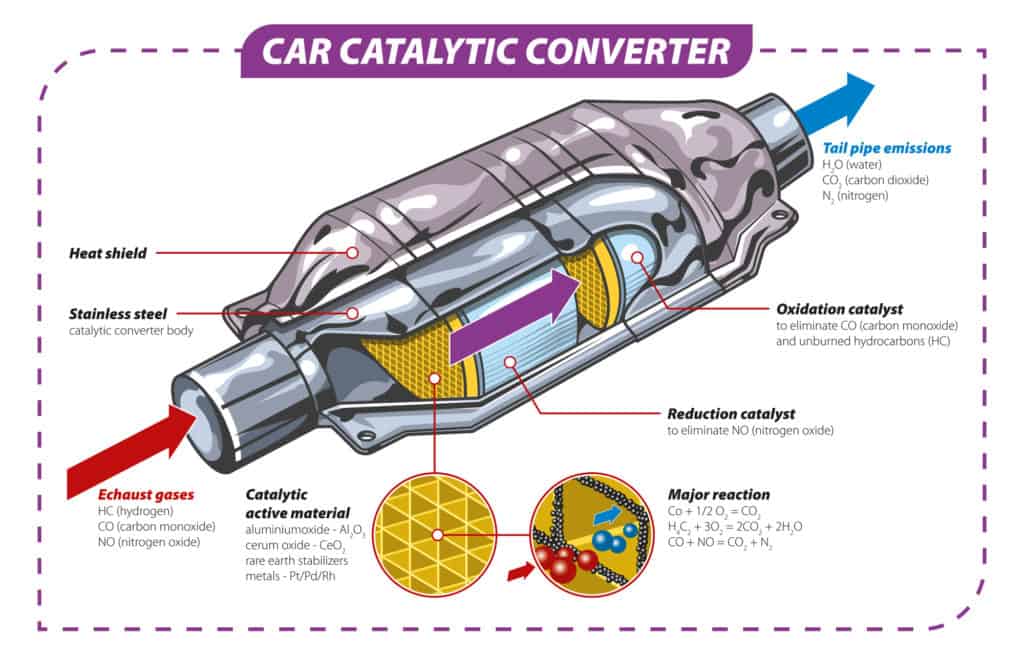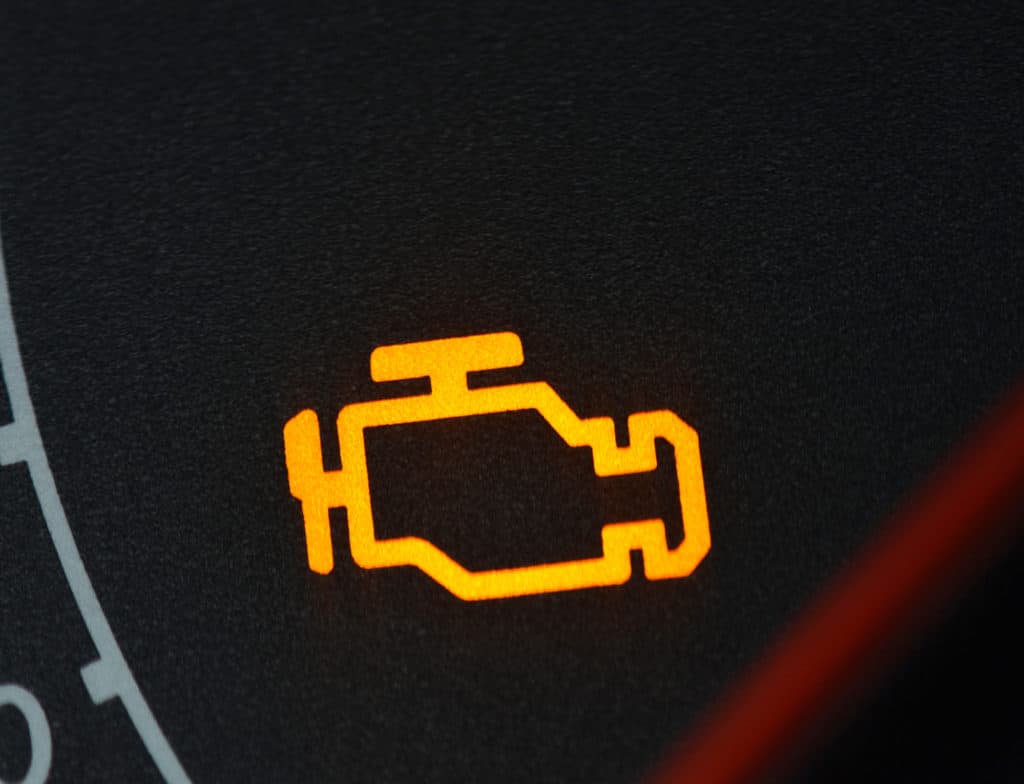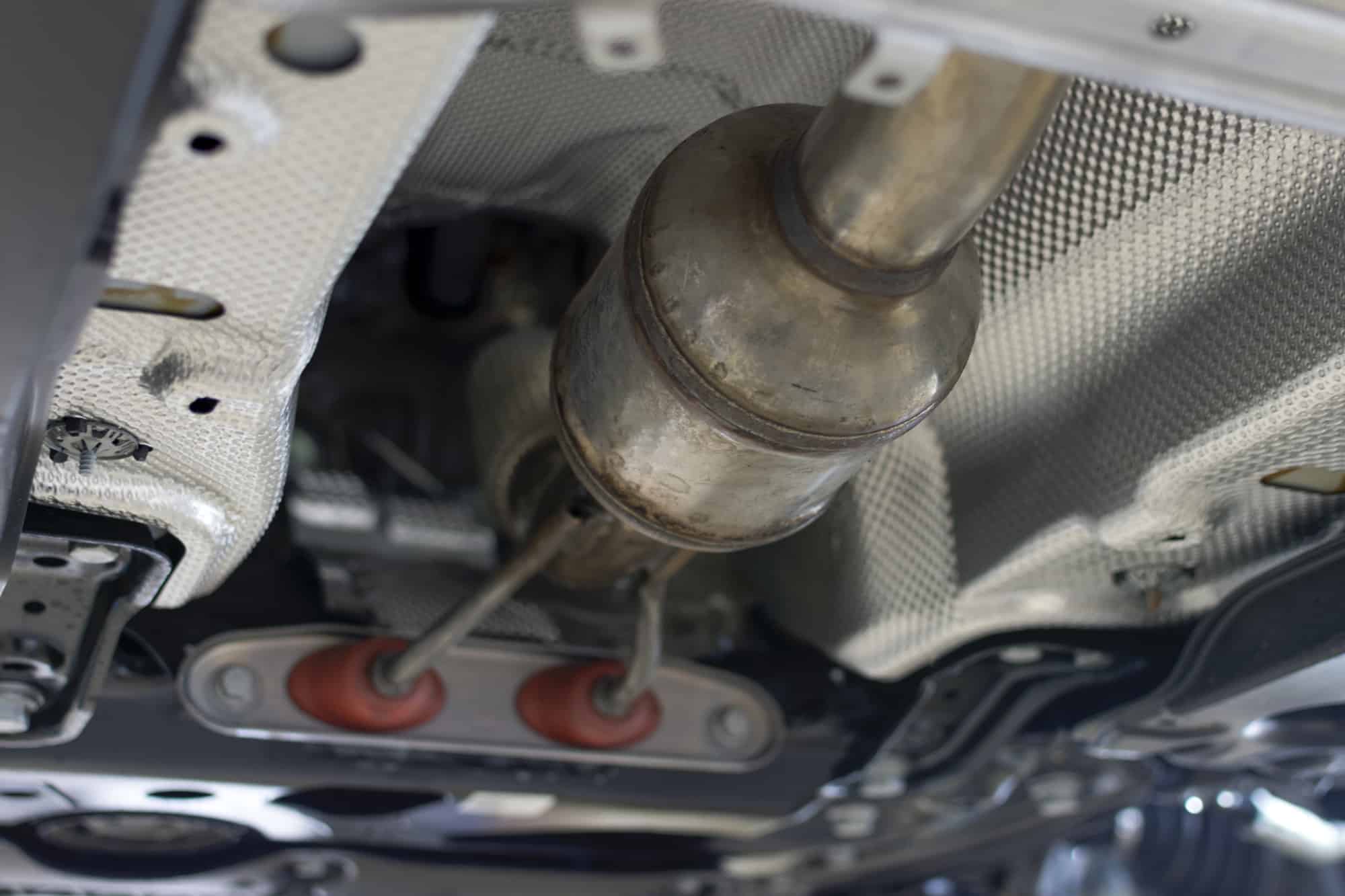The catalytic converter that is fitted to your car is there to filter out harmful substances from the exhaust gases. Sometimes it can fail or become blocked and it may be necessary to remove or replace it. So the question is, can you drive your car without a catalytic converter fitted?
Yes you can drive without a catalytic converter. Driving without a catalytic converter will not damage the engine or the car in any way. However, it may be illegal to drive without a catalytic converter in your state and it is likely that your vehicle will fail an emissions test.

The catalytic converter is part of the vehicle’s exhaust system for a reason; it helps reduce air pollution. So even though you can run your car without one, it’s usually not advisable.
Is it ok to drive without a catalytic converter?
Generally speaking, yes, it is ok to drive without a catalytic converter fitted, assuming it is replaced by a piece of exhaust pipe or another suitable alternative. You will not damage your vehicle, but you may be braking the law, depending on where you are driving.
There are many reasons why you may need to drive without a catalytic converter, even if it’s just for a short period of time.
Most catalytic converters are designed to last the lifetime of the car. If there is a problem with your engine running rich or if the exhaust fumes contain oil, fuel, or even coolant, then the catalytic converter may become damaged or clogged and it will be necessary to replace it.
Catalytic converters usually contain platinum, palladium, and rhodium. These metals play a vital role in oxidizing and filtering hydrocarbons and carbon monoxide.In some countries, catalytic converters are targeted by thieves and are stolen for their internal precious metals that can be worth a lot of money when melted down. It’s not uncommon for these thieves to steal a catalytic converter from a parked car in a driveway.

If you are unfortunate enough to find that your catalytic converter has been stolen then you will need to either replace it with a new one or a suitable piece of exhaust pipe before driving the vehicle.
What happens if you remove the catalytic converter?
Even though you can technically drive without a catalytic converter, your vehicle won’t operate exactly as before. Here are a few things to expect if your catalytic converter is removed.
1. Check engine light and engine error codes.

The catalytic converter is an integral part of the exhaust system and its effectiveness is measured by one or more post-cat oxygen sensors that are fitted to the exhaust. When the exhaust fumes are no longer being filtered this will lead to an increase in hydrocarbons and carbon monoxide. The post-cat oxygen sensors will pick up on this change and send a signal to the ECU to alter the fuel mix. This will usually trigger a check engine light and engine trouble code P0420 that indicates a problem with the catalytic converter.
2. Changes to the exhaust sound.
The catalytic converter helps to muffle the sound from the exhaust. Without it, the noise from the exhaust is going to be much louder, with a raspier tone. If the cat is replaced by a properly fitted piece of exhaust pipe or similar pipe, then the noise won’t be as bad but will still be louder than before.
3. Changes to the fuel economy and engine performance
When the ECU detects a change to the exhaust fumes it will try to remedy the situation by either increasing or decreasing the amount of fuel in the mix in each cylinder. With most modern cars, removing the catalytic converter will cause an increase in hydrocarbons and carbon monoxide that cannot be remedied by altering the fuel mix.
This will usually force the ECU to revert to a default fuel to air mix in response to the out-of-range signals it is receiving from the oxygen sensor and this will reduce overall fuel economy. If the check engine light is triggered this can also negatively affect engine performance as the ECU may limit the amount of power available until the error has been rectified.
Related questions: Can you drive without a catalytic converter?
1. Is a catalytic converter necessary?
A catalytic converter is not necessary for a vehicle to operate properly, provided the engine and exhaust have been designed or modified to operate without one. Widespread usage of catalytic converters began in the late 1970’s and since then manufacturers have designed engines that use them to improve exhaust emissions and fuel economy.
Simply removing the catalytic converter from a vehicle is usually not possible these days without having to make other modifications. So if your catalytic converter was stolen, or if you just want to remove it for fun, then it will trigger some problems as they are a necessary part of most vehicles today.
Catalytic converters are also an integral part of the way in which car manufacturers improve exhaust emissions. From an environmental point of view, the catalytic converter is a very necessary piece of equipment when it comes to tackling global vehicle emissions.
2. Does removing the catalytic converter damage the engine?
No, removing the catalytic converter will not damage the engine. The role of the catalytic converter is to clean up the exhaust fumes created by the engine.
Most modern vehicles will not run properly if you simply remove the catalytic converter. As outlined above, the oxygen sensors fitted before and after the cat will not be able to operate within range without a cat fitted. This will trigger engine error codes and this will have a negative impact on engine performance. So whilst removing the catalytic converter won’t damage the engine, you should expect a decrease in engine power and a decrease in fuel economy.
Could a Missing Catalytic Converter Cause My Car to Not Accelerate?
If your car is experiencing a lack of acceleration, a missing catalytic converter could be the culprit. The converter plays a crucial role in the vehicle’s performance and its absence can lead to issues with power and speed. Solving car nonacceleration mystery starts with checking the status of your catalytic converter.
3. How long can I go without replacing a catalytic converter?
You can usually continue driving for many thousands of miles with a partially blocked catalytic converter. The first sign of a bad catalytic converter will usually be an error code generated by the post-cat oxygen sensor. If the exhaust fumes are not being properly filtered by the cat, then this will be picked up by the oxygen sensor. If the sensor itself is not faulty then there is usually a problem with the cat.
Catalytic converters should last the lifetime of your vehicle, as long as the engine is running properly. Most of the time they will only fail if there are contaminants such as engine oil or coolant in the exhaust gases. Any kind of liquid in the exhaust gas can be bad news for the internal honeycomb mesh of the catalytic converter. Hot oil or fuel vapors in the exhaust fumes can burn or melt the inside of the cat, causing it to become blocked.
You should investigate any error codes or loss of fluids such as coolant or engine oil as they may be leaking into the exhaust manifold and this will inevitably lead to premature catalytic converter failure.
4. Can I replace my catalytic converter with a straight pipe?
No, you cannot simply replace a catalytic converter with a straight pipe without making further modifications to the vehicle. It is also illegal to drive a vehicle without a catalytic converter fitted in most places in the world.
If you replace the catalytic converter with a straight pipe then the exhaust fumes will contain excess hydrocarbons, carbon dioxide, and carbon monoxide. This change in exhaust gases will be picked up by the ECU and will trigger a check engine light.
Some modern vehicle engines will not operate properly if there are exhaust emission error codes so as to protect the engine and the environment. If the catalytic converter is permanently replaced by a straight pipe then you will need to perform an ECU software update to remove the error codes and to allow the engine to return to normal.
As an Amazon Associate we earn from qualifying purchases.









If my catalytic converter fails and I’m considering temporarily removing it to avoid the cost of immediate replacement, how might this decision impact my vehicle’s fuel efficiency and overall performance in the short term?
Given that catalytic converters play a crucial role in reducing emissions, I’m curious if there are aftermarket alternatives that might not only comply with legal requirements but also potentially improve my car’s performance or fuel economy.